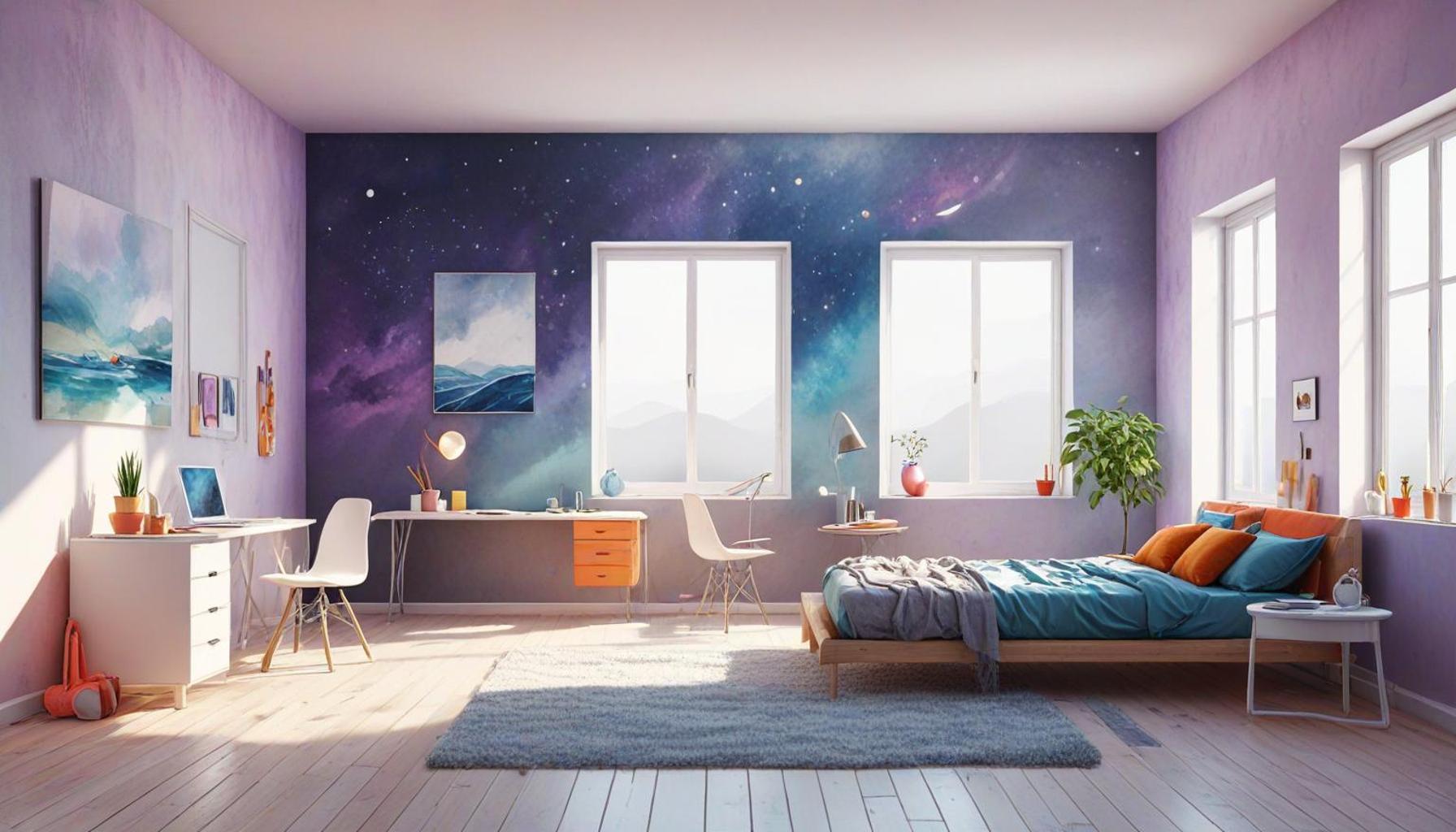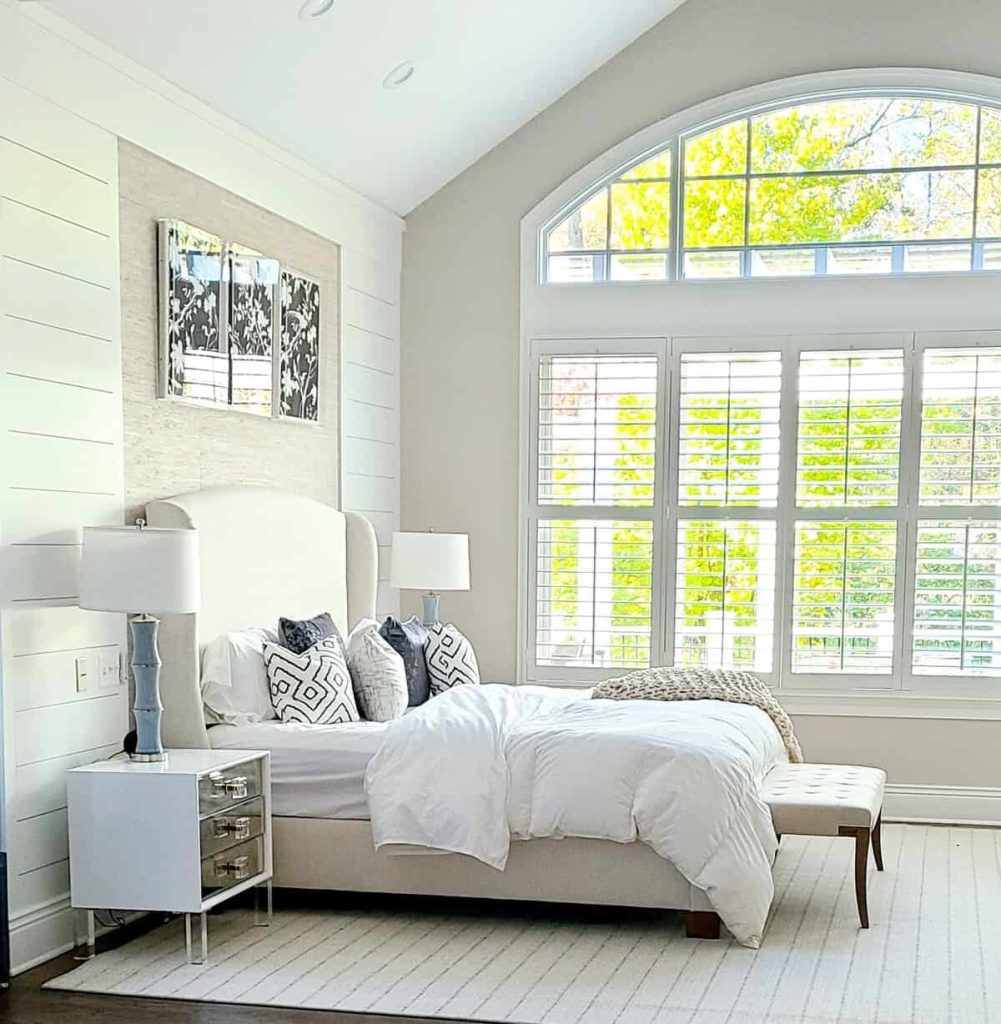Creating Calm Sanctuaries: Space Optimization Techniques in Minimalist Rooms

The Importance of Creating Tranquil Spaces
In a society that often prioritizes productivity and busyness, the need to create a peaceful environment within our homes is paramount. The concept of minimalist rooms serves as a counterbalance to the overstimulation of modern life, offering a retreat where personal well-being takes center stage. By stripping away distractions, minimalist spaces promote not only relaxation but also clarity of mind.
Implementing effective space optimization techniques can significantly enhance the atmosphere of any living area. Below, we explore essential strategies that transform cluttered spaces into serene sanctuaries:
- Decluttering: Begin by assessing your space for items that may no longer serve you. This could range from outgrown furniture to decorative knick-knacks that have lost their significance. Embrace the philosophy of “less is more,” allowing for more open and airy spaces. Research suggests that decluttering can reduce stress, with professionals recommending the “one in, one out” rule to maintain balance.
- Multipurpose furniture: In today’s urban living environments, where square footage often comes at a premium, the inclusion of furniture that serves multiple purposes is invaluable. Examples include bed frames with built-in storage, extendable dining tables, or ottomans that double as seating and storage. Such pieces are not only functional but can also contribute to the room’s aesthetic by maintaining a streamlined look.
- Natural light: Harnessing the power of natural light is essential to creating a welcoming space. Consider window treatments that allow sunlight to filter through—light, airy curtains or even blinds that can be fully drawn away. Research links exposure to natural light with improved mood and productivity, while also highlighting how it can make rooms feel more spacious and inviting.
The thoughtful design of minimalist rooms goes beyond mere aesthetics; these spaces are carefully curated to enhance overall well-being. By making functional design and intentional choices a priority, you can craft environments that not only provide physical comfort but inspire creativity and mindfulness.
As we explore these transformative techniques in greater depth, the journey toward crafting a tranquil sanctuary within your living space will begin. Each decision—be it a deliberate choice in color palette or furniture arrangement—will contribute to a lifestyle that embraces peace, harmony, and clarity. Join us as we navigate the pathway to creating calm environments that enrich our lives and rejuvenate our spirit.
DISCOVER MORE: Click here to enhance your efficiency

Effective Strategies for Space Optimization
Creating a calm sanctuary within your home hinges upon effective space optimization techniques. In a minimalist room, every element should complement the overall purpose of tranquility and simplicity. The following strategies are essential in curating a space that not only looks appealing but also fosters peace and comfort.
Think Vertical
One of the most common challenges in minimalist living is maximizing space. Utilizing vertical space is a game changer in this regard. Consider installing shelves above eye level to keep floors clear and create the illusion of taller ceilings. Floating shelves not only provide storage but can also serve as a platform for displaying select decorative items or plants, adding personality without overwhelming the room.
Color and Texture: The Subtle Touches
The color palette of a room greatly influences its serenity. Opt for a neutral or soft color scheme that enhances relaxation. Shades of white, beige, gray, or soft pastels can create a calming backdrop that feels spacious. Using various textures through textiles such as soft throw blankets, woven baskets, or a plush area rug can introduce warmth and comfort without cluttering the aesthetic.
Creating Zones within Minimalism
Even in minimalist design, defining distinct areas in a room can contribute to a feeling of peace. For example, if you have a multipurpose living area, create a small reading nook by positioning a cozy chair and a side table in a corner, separated by a small plant or bookshelf. This provides a dedicated space for relaxation and mindfulness without sacrificing the open layout.
Embrace the Power of Plants
Integrating greenery into minimalist rooms adds life and freshness to your sanctuary. Houseplants have been shown to reduce stress and increase air quality, making them essential in any tranquil setting. Choose low-maintenance plants like succulents or snake plants, which require minimal upkeep yet contribute significantly to the calming atmosphere.
- Succulents: Perfect for those who may forget to water plants regularly, these hardy beauties can thrive with little attention.
- Snake Plants: Known for their air-purifying qualities, they require very little light and are one of the toughest houseplants available.
- Pothos: This trailing vine can be hung or placed on a shelf, bringing a dynamic touch to your minimalist room.
By employing these strategies, you take significant steps toward transforming your living space into a calm sanctuary. Each technique not only optimizes the use of space but also aligns your environment with the principles of minimalism—tranquility, simplicity, and intentionality. Understanding how to cleverly arrange your room not only supports aesthetic appeal but also nurtures your mental and emotional well-being, promoting a retreat from the hectic pace of life.
| Category | Key Features |
|---|---|
| Decluttering | Removing excess items enhances visual harmony and reduces stress. |
| Multifunctional Furniture | Utilizing space-efficient solutions optimizes functionality without sacrificing aesthetics. |
| Color Palettes | Neutral tones create a calm atmosphere and contribute to overall well-being. |
| Natural Light | Maximizing light exposure enhances mood and energizes the space. |
Creating Calm Sanctuaries: Space Optimization Techniques in Minimalist Rooms is not just about aesthetics; it’s a lifestyle choice aimed at enhancing mental clarity and peace. By employing space optimization techniques such as decluttering, individuals can find solace in their living environments. The process of removing unnecessary items is crucial because it opens up the room, allowing for both visual and mental breathing space. Moreover, choosing multifunctional furniture is a smart strategy that maximizes usability in limited areas. A bed that doubles as storage or a coffee table that extends into a dining surface demonstrates how function and design can seamlessly converge. Incorporating a carefully selected color palette, including calming hues, supports the sensation of tranquility and promotes a cohesive look across the entire room. Additionally, focusing on natural light is vital, as it can drastically alter the atmosphere of a room. Strategically placed mirrors and open window treatments can facilitate the flow of natural light, thus enhancing the overall ambiance and brightness in minimalist spaces. Embracing these techniques fosters a serene environment where one can retreat from the chaos of daily life.
DISCOVER MORE: Click here for tips on maximizing small spaces
Incorporating Multi-Functional Furniture
One of the cornerstones of minimalist design is the use of multi-functional furniture. In smaller spaces, pieces that serve multiple purposes can eliminate the need for excessive items while maintaining functionality. Select furniture that complements your aesthetic while providing additional storage or utility. For instance, an ottoman can serve as both a footrest and a hidden storage compartment, effectively minimizing clutter.
Furniture That Fits
When selecting furniture for a minimalist room, the size and scale are crucial. Oversized furniture can overwhelm a space, while smaller pieces can create a sense of openness. Look for items that have a slim profile, such as a slender sofa or a small dining table, that encourage flow and accessibility. Additionally, consider using benches or stools that can be easily moved around or stored when not in use, further enhancing the adaptability of your space.
Creating Illusions of Space with Mirrors
Mirrors are a powerful tool in minimalist design, known for their ability to create the illusion of space. Strategically placing a large mirror can reflect light and make a room feel larger and more open. Whether it’s a floor-to-ceiling mirror or an arrangement of smaller mirrors, this technique can add depth and brightness to your sanctuary. To keep the look cohesive, choose mirrors with simple, clean lines that blend seamlessly with your decor.
Embracing Open Shelving
Open shelving can be a striking design choice in minimalist rooms. It allows for the display of curated items and can serve a dual function of storage, reducing the need for bulky cabinets. By intentionally selecting only a few key pieces to showcase, such as a favorite book or artisanal dinnerware, you maintain a clean aesthetic while keeping your necessities at hand. Furthermore, open shelves can help declutter countertops and surfaces, promoting a serene environment.
Using Light Wisely
Optimal lighting plays a vital role in establishing a calm sanctuary. Embrace natural light wherever possible by avoiding heavy drapes and opting for sheer curtains that allow daylight to filter through while ensuring privacy. Additionally, incorporate various light sources such as floor lamps, table lamps, or wall sconces to create soft, layered lighting. Warm white LED lights can enhance the ambiance, fostering a relaxing atmosphere perfect for unwinding after a long day.
- Dimmable bulbs: These can help you adjust the brightness according to the mood, highlighting different areas of your space as needed.
- Task lighting: Ensure you have adequate lighting for specific activities, from reading to cooking, without resorting to harsh overhead lights.
- Accent lighting: Use subtler lighting options to illuminate architectural features or artwork, adding depth without clutter.
Ultimately, achieving a calm sanctuary through space optimization in minimalist rooms is an ongoing journey. Each decision made in the arrangement and selection of furnishings contributes to a holistic environment that not only embodies simplicity and elegance but also nurtures one’s mental well-being. By implementing these strategies, you will create a harmonious living space that feels both personal and inviting, aligning beautifully with the principles of minimalist design.
DISCOVER MORE: Click here to learn how to declutter your space
Conclusion
In the journey toward creating calm sanctuaries, understanding the principles of space optimization in minimalist rooms is essential. By carefully selecting multi-functional furniture, you not only ensure practicality but also promote an atmosphere of tranquility that resonates throughout your living space. The importance of scale cannot be overstated; thoughtfully chosen pieces can significantly enhance openness, thereby creating an inviting environment.
Moreover, the clever use of mirrors and open shelving adds depth and organization, crafting an aesthetically pleasing yet functional layout. Mirrors alleviate the feeling of confinement, while open shelves allow personal expression without the burden of overcrowding. Equally crucial is the careful consideration of lighting; leveraging natural light and layered fixtures establishes a serene ambiance perfect for relaxation.
Ultimately, the art of minimalist design transcends mere aesthetics. It is a conscious lifestyle choice that emphasizes mental well-being and personal peace. As you explore these space optimization techniques, remember that each small decision you make can contribute to a harmonious living space that reflects your values. Take your time to curate your sanctuary, and allow simplicity to guide you. Embrace the potential of your home to be a calming refuge amidst the chaos of everyday life, inviting you to unwind and rejuvenate.
Related posts:
Maximizing Small Spaces: Minimalist Organization Tips for Urban Apartments
Maximizing Small Spaces Minimalist Organization for Tiny Apartments
Maximizing Small Spaces: Optimization Strategies for Minimalist Environments
Collaborative Workspaces: Integrating Space Optimization to Foster Creativity in Minimalist Environm...
The Importance of Natural Light: How Lighting Contributes to the Optimization of Minimalist Spaces
Transforming Disorder into Order: The Role of Space Optimization in Digital Minimalism

Linda Carter is a writer and organization expert specializing in minimalism and personal organization. With extensive experience helping individuals create clutter-free, functional spaces and adopt mindful habits, Linda shares her knowledge on our platform. Her goal is to empower readers with practical advice and strategies to simplify their lives, stay organized, and achieve a sense of calm and balance in their daily routines.